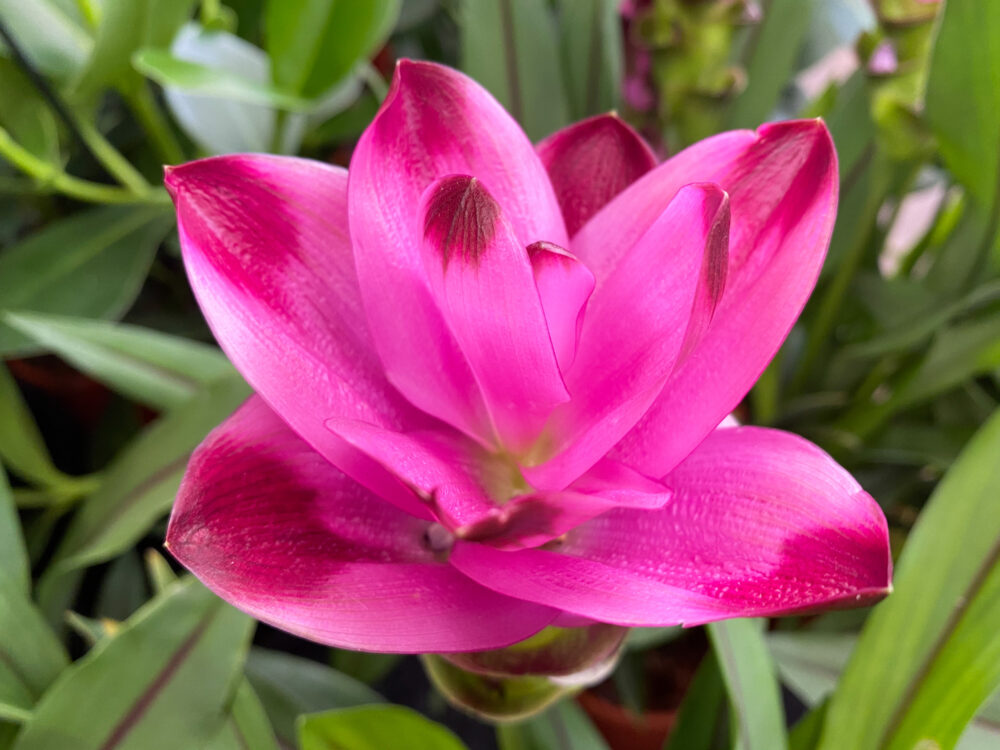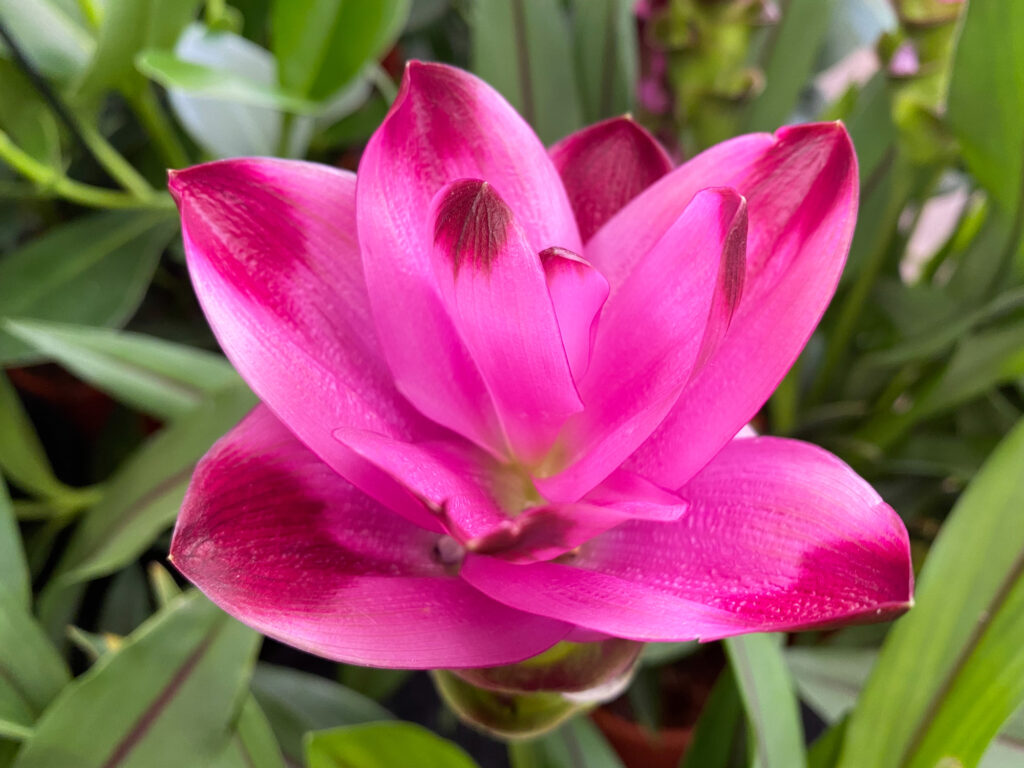How to Grow & Care for Curcuma Turmeric Plants
Curcuma plants are by far the most rapturous herbaceous perennials due to their glowing foliage and colorful flowers that last for quite some time. Compared to a range of other options, this tropical plant fits the bill if you’re looking to have a garden filled with a bold and dramatic foliage, regardless of the season.
One peculiar feature that makes this tropical beauty a great option for many gardening hobbyists is it can easily be overwintered, and we’ll look more into that later in this guide. Read on to check out the exact growing and nurturing conditions Curcuma plants need to appear lush and fetching.
More About the Turmeric Plant
To start with, the Turmeric plant is one among over 1000 herbaceous perennials from the Zingiberaceae ginger family. Most aromatic perennial herbs develop from tuberous rhizomes, so growing it isn’t toilsome even for a beginner.
Curcuma plants, alongside other species, are native to quite a number of regions including New Guinea, Nothern Australia, Southeast Asia, and Southern China. A couple of other species in this family are naturally accustomed to warmer areas such as Central America, Florida, together with tropical regions in Africa.
If you probably have no hint, the term “Curcuma” is borrowed from Sanskrit— a traditional language of South Asia. It simply means turmeric. The name was at the outset coined in 1753 by Linnaeus, a Swedish botanist, and zoologist.
Most ginger plants are grown outdoors. They don’t spread quite much and stick to roughly the same throughout the entire growing season. Around mid-summer, you can expect your Ginger Turmeric plant to produce a few clustered flowers which appear in the shape of spikes.
The growth hormones of your Turmeric plants tend to go into dormancy after blooming, so don’t expect any significant changes in its size and appearance. One of the best times to plant this perennial is around mid-spring when the temperatures are a little warmer. You’ll need to prepare rhizomes and the nursery bed before cultivating. To get a firm base, the rhizomes need to be planted in holes that are roughly between 2”-4” inches deep.
How to Grow the Turmeric Plant
The Curcuma Turmeric can mature either indoors or outdoors, depending on the growing conditions of the region where you live. If you prefer growing a number of them outdoors, then the first step would be to prepare a garden bed that’s fertile. So, you want to consider using compost manure. Aside from that, you’ll also need to:
- Make sure the soil in the garden bed drains water quite fast.
- Place the rhizomes in the growing pots. You’ll later need to dig a hole with a diameter slightly wider than that of the growing pot.
- Get rid of all the perennial weeds that would compete for nutrients with your Curcuma Turmeric plants.
- Mulch the entire garden bed after planting the turmeric plants, so the soil can retain some moisture.
- Keep the soil gently moist, but not soggy. Check if the soil has dried up at least twice every week. When irrigating the garden, you want to keep the foliage alongside all the flowers that are beginning to bloom from getting into contact with water.
- The tuberous rhizomes need a firm base, so you want to press the topsoil downwards and plant them in holes that are about 4” inches deep.
- Even though they can grow in mass numbers, don’t overcrowd your Curcuma plants to keep them from competing for essential nutrients.
Curcuma Plant Caring Tips
Flowering & Fragrance
Ranked among the most sought-after summer garden plants, the Ginger Turmeric yields a few bright flowers in different shades of pink, white, and purple during the blooming season. The plant features some trumpet-shaped flower spikes which fade off once the blooming stage is over.
You might also smell a loud odor coming from the leaves. While caring for this ravishing perennial plant, you want to watch out for pests that are mostly attracted to the scent. If you’re looking to grow your Curcuma perennial alongside other plants, there’s a solid chance the flowers will reach between 18” to 24” inches, on average.
Soil & Transplanting
What matters most to your turmeric’s well-being is rich soil that drains well. It needs to be a little more porous, so you want to use sand or loamy soil. And unlike succulents, spring and autumn are the most suitable seasons to plant herbaceous perennials.
Around autumn when the soil is a bit warm, the rhizomes will begin to form roots and take shape before winter clocks in. You want to keep the soil evenly moist after planting the rhizomes. You can opt to plant your Curcuma in a growing pot or outdoors.
If you’re looking to grow it outdoors in a garden bed, you first need to uproot any weeds that would compete for nutrients. There’s are high odds your Curcuma Turmeric growing in the garden will be invaded by nutrient-draining weeds especially if the layer of mulch begins to shrink.
And to keep that from happening, you need to replace the top-dressing after a while, say, every three months. Use a layer of mulch that’s at least 2’ inches thick so it can retain moisture much longer and prevent the germination of weeds.
For turmeric plants growing in pots, transplanting is necessary if the soil is beginning to lack some essential nutrients. The rhizomes too grow thick and wide at a rapid pace, so your Curcuma turmeric plants would need to be repotted after a year or two.
Light & Temperature
Curcuma Turmeric plants do well under the full sun and with moisture levels above average. Some light intensity will help this herbaceous perennial beauty elongate the length of the stems, bloom, and have a dense leaf color. Place the container near a south-facing window if you’re looking to grow your Turmeric indoors so it can get at least 6 hours of light each day.
But when exposed to intense heat, the soil will begin to crack and you might see a few spots on the leaves caused by sunburns. To avoid that, it’s best to grow this perennial plant under some partial shade. Curcuma plants can develop quite briskly under temperatures ranging between 20-35 degrees Celsius.
You want to grow your Turmeric as an annual if you’re living in a cooler region. This houseplant begins to show some signs of fatigue when temperatures fall below 10 degrees Celsius. Cooler temperatures during nighttime, however, help the plant recover from the loss of moisture, and intensifies the lifespan of the flowers.
Watering & Feeding
Effects of overwatering are barely revertible, even more so, on this kind of herbaceous perennial plant. One of the early signs that shows up as a result of overwatering is the yellowing of the leaves. To avoid such gloomy effects from happening, you’ll need to space out the watering intervals.
You can use a soil moisture sensor to check whether the first few inches of the topsoil are entirely dry. When the temperatures are warmer especially during spring and summer, water your Curcuma Ginger plants every 6 to 7 days.
Lessen the number when it’s winter since the growth hormones will go into dormancy around this season. When the temperature is too hot and dry, moisten the base part of foliage to boost the surrounding humidity levels. But you need to careful not to soak the foliage and flowers wet when watering the garden if your Curcuma Turmeric plants are growing outdoors. Herbaceous perennials grow affluently when fed with a balanced and soluble fertilizer in the ratio of 20-20-20.
That’s to suggest the composition for nitrogen, phosphorus, and potassium composition needs to be in equal amount. Even with a balanced all-purpose fertilizer, your turmeric plant will still bloom lots of colorful flowers. If your ginger plants are growing outdoors, one tablespoon of fertilizer should be enough for 1 square foot of the garden soil. New growth begins to emerge around early spring, so you’ll need to wait for this season to feed your Curcuma turmeric.
Grooming & Maintenance
You won’t need to deal with an elaborate grooming schedule. This houseplant is low-maintenance and can cope up with a wide range of adverse conditions such as the freezing months. All you need to do on a routine basis is make sure the soil is gently moist and keep your Curcuma Turmeric under some partial shade. You can control the humidity and temperature conditions by moving it inside when it’s winter.
How to Overwinter Curcuma Turmeric Plants
Winter will definitely come knocking, but I bet you don’t want to lose your plant to the adverse effects of extreme weather conditions. If you’re living in an area that experiences frosting conditions every year, you’ll need to move your Curcuma Turmeric plants indoors where the temperature and humidity levels can be controlled.
Even though the growth hormones of this herbaceous perennial tend to go into dormancy when the temperatures are freezing, you can still treat it as a houseplant. And here are handy tips you can use to overwinter your Curcuma Turmeric plants:
- Use sterilized tools to dig the tubers growing in the ground so you don’t infect them with any fungal or bacterial diseases. The best time for this exercise is around the fall season, especially when the foliage begins to turn yellow.
- Use water to clean the soil stuck in the tubers.
- Leave the tubers outside when it’s warm and sunny so they can dry.
- Once they’re dry, store them in a container filled with a mixture of peat moss and coarse sand.
- Don’t cover the container to give the pores on the tubers some space to breathe.
- Over the winter season, it’s best to keep the container somewhere cool with temperatures as low as 10 degrees Celsius.
- To keep the tubers from drying up, you want to moisten them by sprinkling some water quite occasionally overwinter.
- For Curcuma Turmeric plants in containers, you’ll need to wait till the potting mix dries up, remove any weeds on the edges of the growing media, then place the pots in a room with a temperature of 10 degrees Celsius.
- You’ll also need to sprinkle the tubers growing in pots on a periodic basis, so they don’t die as a result of wilting.
- During spring after the cold season is over, bring your Curcuma plants out and place them under a shade. Warm temperatures and enough moisture will help the tubers develop new growth during the growing season.
- It’s also worth noting that Curcuma plants don’t need any special maintenance when growing under warm-winter regions.
Common Pests & Diseases
The Curcuma ginger has a potent odor that attracts a few common pests, alongside dreadful fungal infections. And the best way to avoid dealing with diseases is propagating this herbaceous beauty using rhizomes that have so signs of being infested with pests, and appear to show zero signs of fungal or bacterial infections.
The rhizomes may suffer from rot caused by pathogens such as Fusarium sp. and Erwinia sp., which are the common fungi found in soil. If there’s some powdery mildew on the leaves, that could be a sign of fungal infection. Being tempted to overwater your turmeric plants would also lead to root rot.

